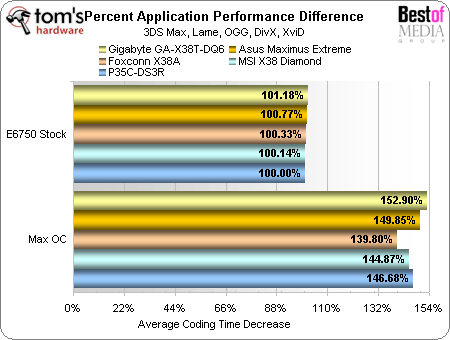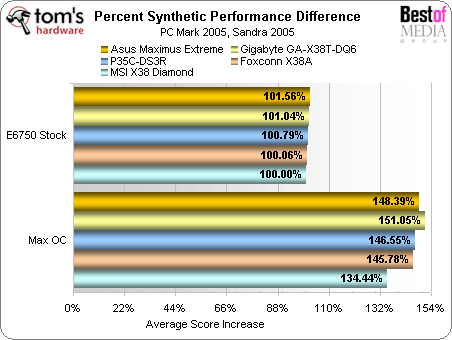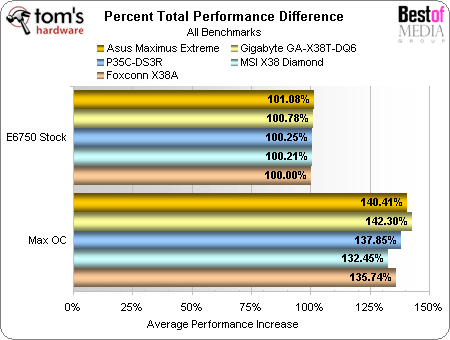X38 Comparison Part 2: DDR3 Motherboards
Performance Summary, Continued
Gigabyte's GA-X38T-DQ6 leads in average application performance at both default and best-overclocked speeds. Applying a penalty for its 0.5% default-speed overclock leaves it in a 0.67% lead over the slowest configuration, while penalizing Asus's 0.2% default-speed overclock drops it to 0.57% compared to its slowest competitor.
Synthetics aren't necessarily relevant to any actual program, but many builders still use them in their purchasing decisions. They also tend to target specific functions not fully addressed by our limited number of application benchmarks.
Asus leads in average synthetic benchmark performance, and correcting for its 0.2% default overclock would still leave it on top of the third-place P35 comparison board. Gigabyte comes in second, but correcting for its larger 0.5% default overclock simply gives Asus a more commanding lead.
Intentional overclocking puts Gigabyte back in the lead with a huge 51% advantage over the slowest base configuration. MSI's good overclock helps little here, as its slower memory speed becomes a target for RAM benchmark decimation.
An average of all performance differences will help to indicate the performance "feel" of each system.
The Maximus Extreme wins at default speed, but the difference is probably too small for even the fussiest of users to "feel". Gigabyte's stronger overclock gives it the maximum stable CPU speed advantage, but by less than 2% over the Maximus Extreme. The P35 Express comparison board was an average-performance product in previous testing, yet it still managed to hold third place at both default and overclocked speeds, proving that buyers should pick their board based on needed features rather than a wish list of things they might never use.
Get Tom's Hardware's best news and in-depth reviews, straight to your inbox.



